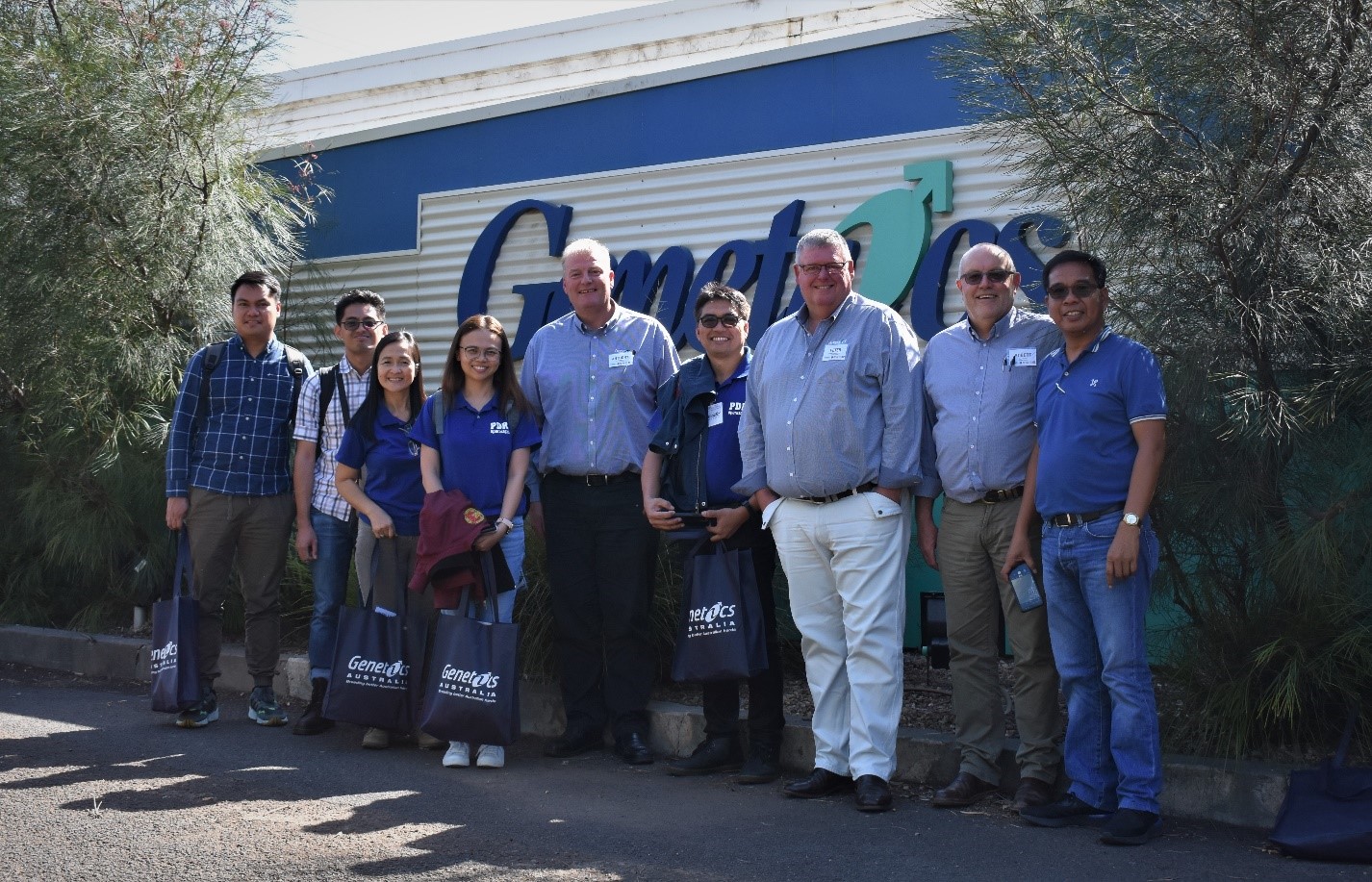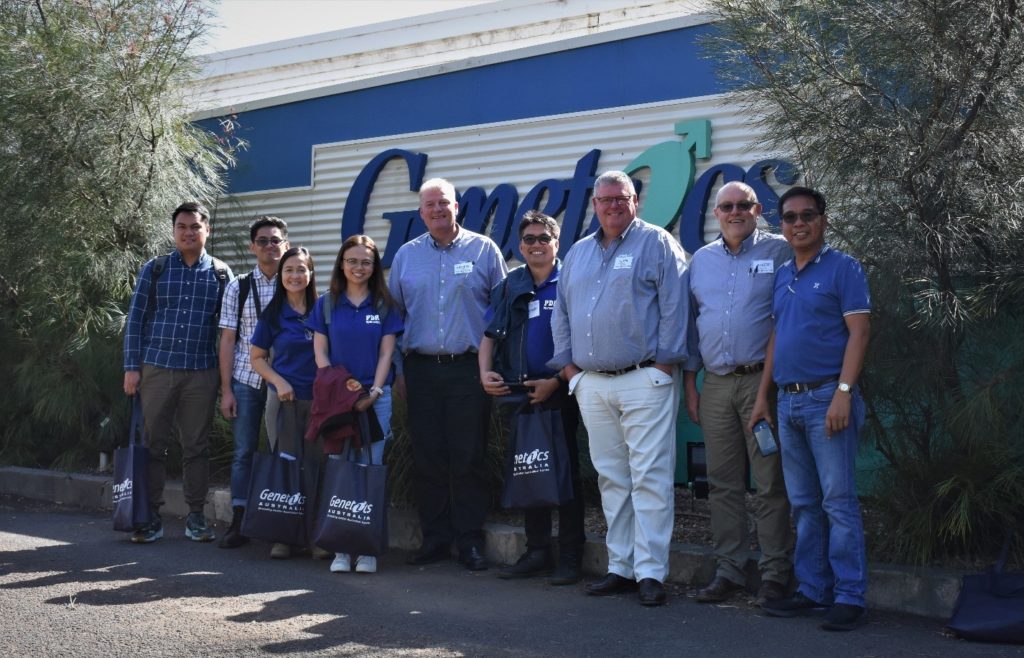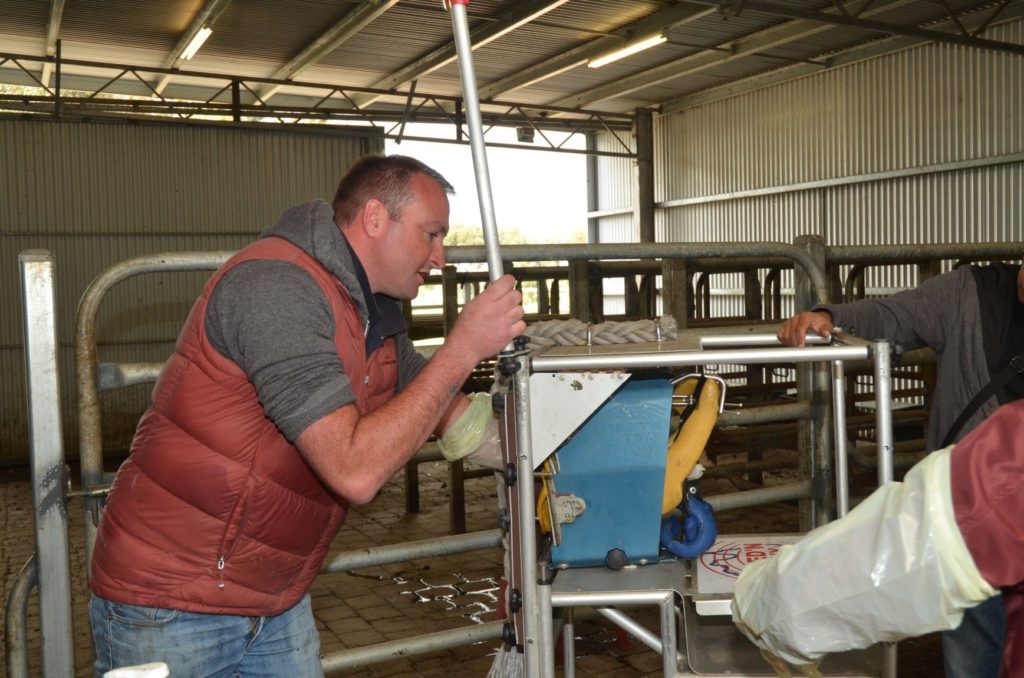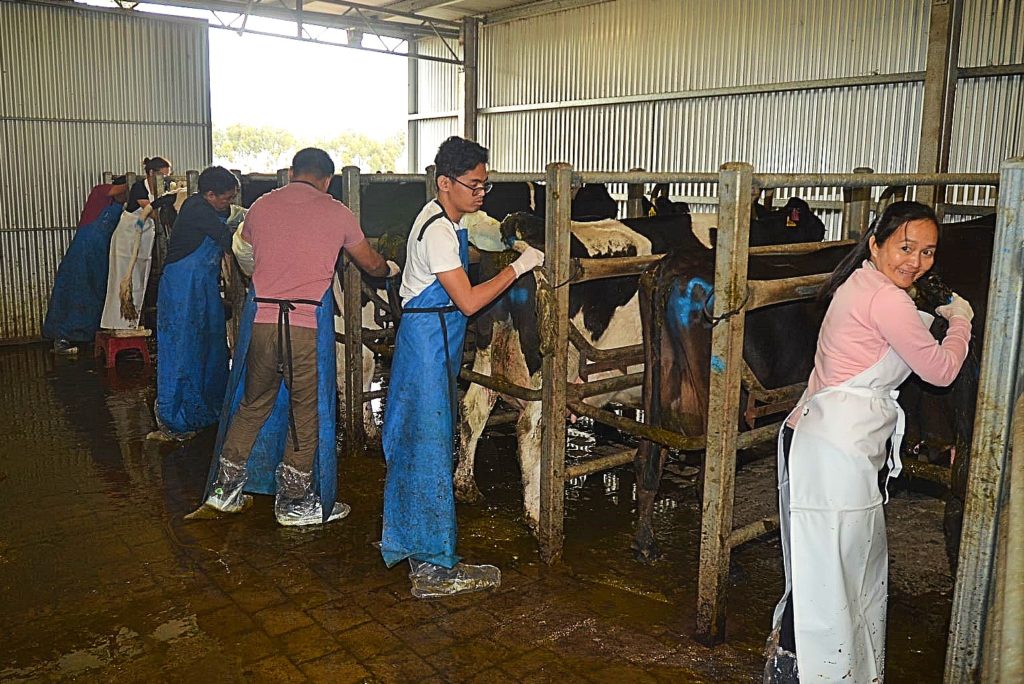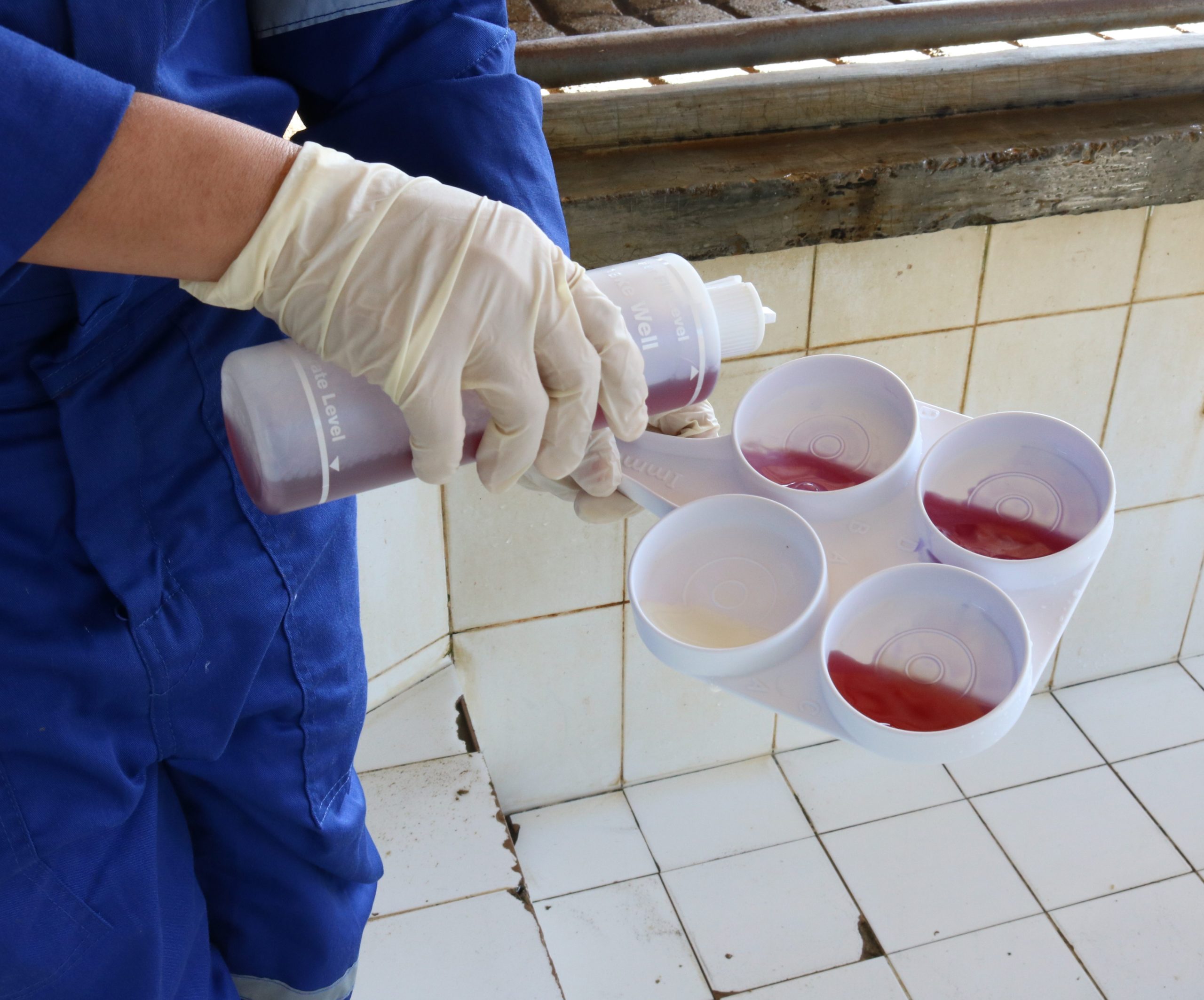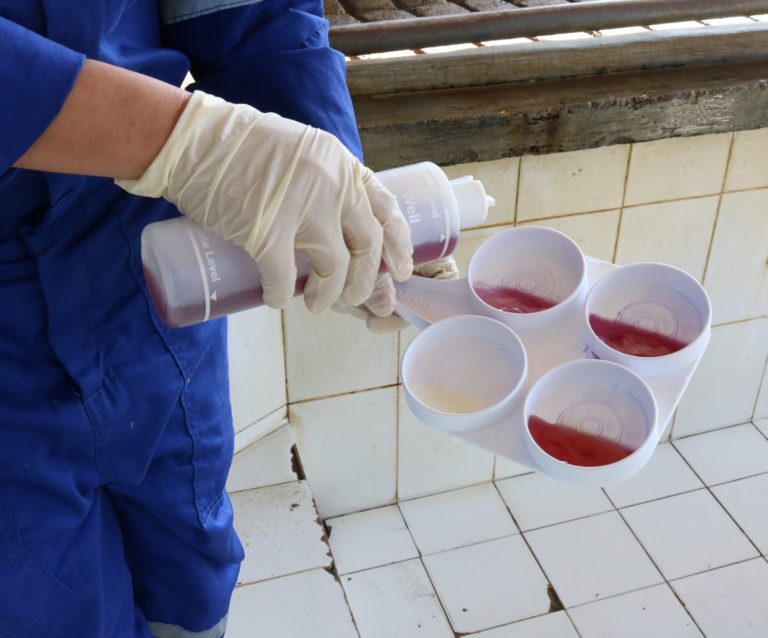Researchers : MM Loresco, JB Banayo, JML Roxas, KMD Saballo, RRCS Yambao, J Centeno, and AA Angeles
Funding Agency: USAID-STRIDE
Collaborator/s or Partner/s: Batangas State University – Lobo Campus, De La Salle Lipa, Benacorn Corporation, Philippine Asian Biotech Research and Development Corp. (PABRD), Samahan ng Maggagatas sa Batangas Cooperative (SAMABACO), Provincial Veterinary Office of Siquijor
ABSTRACT
Forages are very important component of the ration of ruminants (cattle, buffaloes, goats and sheep). They consume 60-80% roughage in their diet. Theprovisionofqualityforagestodairycattleisimportanttomeetthe nutrient requirement, which translates to high milk production. Moreover, forages provide the cheapest feed resource in the ruminant’s daily diet.
Nutrition provided to milking cows greatly affects its milk production as well as milk quality. With the downward trend in supply and quality of available roughage in the Philippines, there is a continuous effort to introduce new species of forage that would meet the demand of the country’s growing dairy industry.
The history of forage introductions in the Philippines started in the 1960’s when the Bureau of Animal Industry of the Department of Agriculture and the Dairy Training and Research Institute in UP Los Baños (UPLB) independently or through their joint-projects conducted researches on evaluation of forage accessions from Australia and other countries to spearhead pasture development and support the growing ruminant population in the country.
Improved forage species produce high quantity of herbage with regular application of fertilizers and efficient management (i.e. weed control, irrigation and controlled grazing). However, with continued use, improper management and exposure to adverse conditions, improved forages lose in competition with native species and this would necessitate re-establishment, a practice that is often very expensive.
On the other hand, indigenous plants have been dominant species in native vegetation surviving in equilibrium with the physical and biotic factors prevailing in the different agro-ecological zones throughout the country. They persist alongside introduced forages and they are also well relished by grazing animals. More so, they can tolerate extreme environmental conditions (i.e. drought and heavy rainfall) that are being experienced especially in recent years due to climate change. These indigenous plants such as trees, shrubs, vines and grasses can be utilized to partly replace the roughage requirement of ruminants especially in backyard farms.
To date, DTRI- UPLB has a collection of 40 introduced forages species. Some of these forages were introduced in the different regions in the country and became an important component of improved pasture for ruminant production. From this collection, six select forages were identified for use in the project. These forages are the common species grown in improved pastures for ruminant production, particularly in dairy and beef cattle farming.
Napier (Pennisetum purpureum), is a tall, high-yielding tropical grass, which is popular in cut-and-carry system of utilization. Its hybrid counterpart (Pennisetum purpureum x P. glaucum) produces more yield and has greater potential as livestock feed and as biofuel source. There are 6 ADSC accessions of hybrid Napier available for project use.
Guinea grass (Panicum maximum), a versatile bunch forming grass utilized for both cut-and-carry and grazing can perform well under partially shaded conditions. It is a well-adapted under the different agroecosystems in the country.
Signal (Brachiaria decumbens), and Jarra (Digitaria milanjiana) grasses were introduced more recently; Signal grass is suitable in marginal field conditions e.g. acidic and low soil fertility while Jarra grass has high nutritive value as shown by its high non-fiber carbohydrates (NFC) content.
Perennial Stylo (Stylosanthes guianensis), is herbaceous to shrubby type of forage legume with 16-18% crude protein content. It can provide additional protein to animals grazing grass pastures mixed with this legume. It also performs well under marginal conditions like acidic and low soil fertility.
We recognized the need to fully characterize these introduced forage species so that we can make proper recommendation to suit the local conditions and the dairy breeds being used in the Philippines.
The project reintroduced the six forages in selected regional areas of Batangas and Siquijor through the research and extension/training components of the project in collaboration with our project partners, Batangas State University, De La Salle Lipa, Philippine Asian Biotechnology Research and Development Corporation, Benacorn Corp. Provincial Veterinary Office Siquijor and Samahan ng Maggagatas ng Batangas Cooperative. The collaboration with Batangas State University Lobo Campus enabled us to conduct forage performance evaluation, establish a duplicate forage genebank and conduct a trainor’s training on forage production and conservation, activities which will have an impact in the revival of interest on local pasture resources. Batangas State University can replicate the training in their area by using the training module and manual developed for their use in educating the small farmers on the importance of quality forages as a cheap source of feed.
The forage introduction in Siquijor in collaboration with the Provincial Veterinary Office of Siquijor also provided a strong support system to the cattle genomic project, also being supported by USAID STRIDE, which tapped the local cattle population of the island as potential source of a local dairy breed in the country.
A tissue culture laboratory facility at DTRI-UPLB was established for the micropropagation of hybrid Napier grass. The successful propagation of Napier grass from leaf tissues via tissue culture can be considered as a pioneering work in the Philippines. This accomplishment will have important applications with regards to rapid multiplication of planting materials from the limited samples of elite forages available locally. The availability of enough quantity of planting materials is a vital support to the pasture development initiatives of both public and private sectors to sustain the growing ruminant industry in the country.
The forage performance evaluation conducted in three locations affirmed the significant effect of environment i.e. soil and climate on the herbage yield of the six select forages. The genetic potential of forages to produce high biomass was hindered by the unfavorable environment e.g. infertile soil, lack of water in the location where these were introduced. Long established concept of genetic x environment interaction on crop performance would necessitate the application of location –specific cultural management interventions to optimize the performance of the select forages. In the present study, the same cultural management practices such as fertilizer application was applied in all three locations to show the genotypic differences among the six forage species as expressed phenotypically through parameters like plant height, herbage yield and nutrient composition.
TMR feeding study provided results that lean towards the claimed advantage of feeding this complete dairy ration to milking cows. More milk of better quality i.e. high protein, minerals and total solids was produced by cows fed the more nutritious TMR (HD-TMR) compared with the high forage TMR (LD-TMR), however at the expense of lowered fat content. Higher number of experimental animals and replication of the feeding trial in backyard-, semi- and commercial- dairy farms would be necessary to obtain more valid results that would merit its commercial viability to dairy farmer-adopters.
The physiological effects that will be inferred through bioinformatics from the sequencing data of RNA extracted from milk of experimental animals was not determined in the present study due to the unexpected deterioration of RNA sample sent to the USA. Nevertheless, milk yield and quality data were considered sufficient to establish the beneficial effects of feeding high quality ration such as the TMR at the animal production level. We will consider pursuing this laboratory procedure in our future researches.
The project generated data and information from the numerous R & D activities conducted during its 15 months duration that could encourage our dairy farmers to reconsider the sustainable use of the local forage
resources that we currently have, and explore the utilization of indigenous plants as feed source to sustain animal production.
The project was able to create an impact to the communities that serve as hosts in the capacity building /extension work. This effort will be more effective when our partner educational institutions and LGU’s institutionalize the technology interventions and learnings in their programs. Batangas State University and De La Salle Lipa will be able to use the research results in relevant courses and also extend technologies to farmers through the conduct of regular training courses. Appropriate techniques in pasture establishment and management and forage preservation through ensiling were demonstrated to the select groups of farmers in Siquijor and Tanauan, Batangas during the project period. Dairy farmers in Batangas, due to its close proximity to UPLB, have close association with our agency with regards to our extension program e.g. training, technical assistance on dairy production and pasture development.
In the future, the TMR feeding study can be pilot tested in farms with enough number of milking cows (n=6 – 8) to validate the results obtained using a minimal number of cows in this study.

